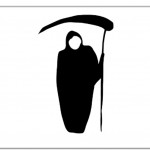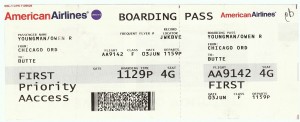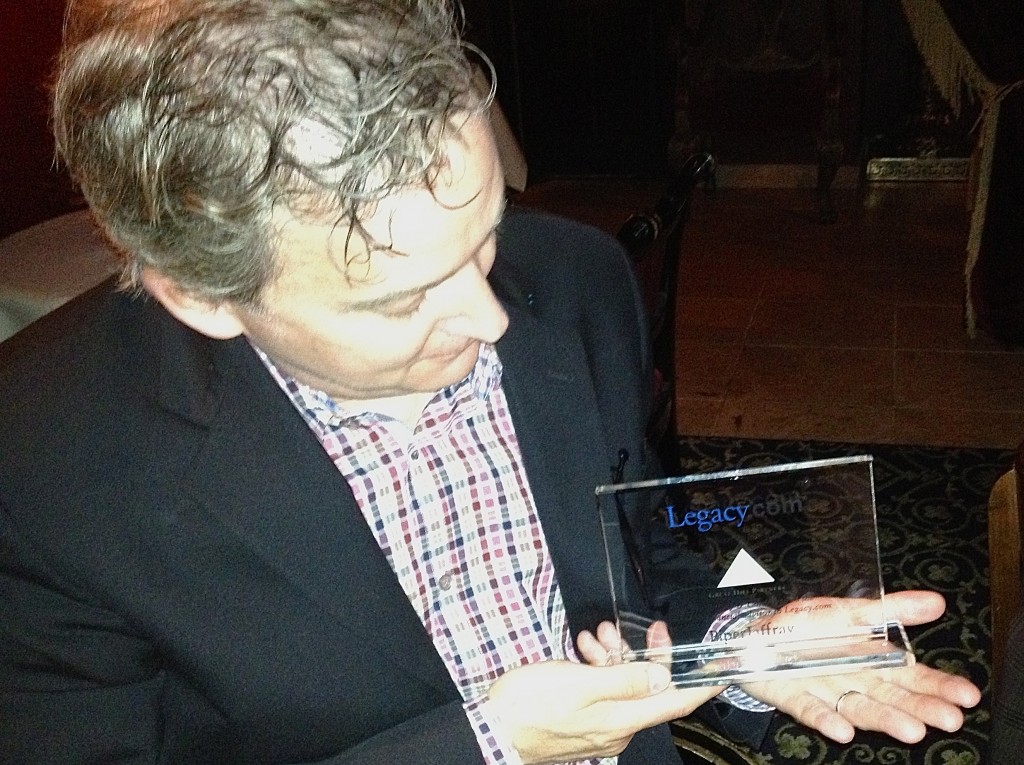It was 4:19 p.m. on October 24, 1997, that I finished the e-mail.
 “I know you’ve all been waiting for this,” I told my management team at chicago.tribune.com, Web pioneers all. “Attached are a skeleton action plan and top-line financials for the ‘death.com’ project plan.”
“I know you’ve all been waiting for this,” I told my management team at chicago.tribune.com, Web pioneers all. “Attached are a skeleton action plan and top-line financials for the ‘death.com’ project plan.”
Bad puns aside, it was a serious enough document. Development of the newspaper’s help wanted, real estate, and automotive classified products and strategies was well under way, and it was time to think about the biggest classified category that remained: death notices.
It seemed to me that the opportunity was a big one. Obituaries and death notices had long been a central part of any newspaper’s identity, helping to cement the paper’s place in a given community by sharing a particularly important piece of community news in a timely fashion. But because the Internet was changing everything, in order to keep it that way, we needed to act. In fact, we needed to create something new. Something as valuable to a user as a printed notice was to a reader. Something interactive.
SERVICES PLAN
–Ability to make online, secure donations to charities (“In lieu of flowers . . . “)
–Ability to send flowers, etc., to funeral home or bereaved
–Ability to send condolences to the bereaved.
–Form for submitting paid death notices to Telemarketing. (Needs to be integrated with other online classified ad submission projects.) Ability to FTP photos to us for paid inclusion with death notices.
–Form for submitting obits for consideration to the editorial department. Ability to FTP photos of deceased for editorial consideration.
And hey, after talking to my advertising colleagues … and although free obituary- and memorial-related sites had been around since the earliest days of the Web … I thought there was some revenue in it. After all, death notices were already important enough that people paid to place them.
REVENUE PLAN:
–Bundled upsell from the printed newspaper
–Opportunity to have photo run with paid death notices, for a fee
–Paid enhancements to funeral parlor directory
— Perhaps the building of mini-sites for mom & pop parlors.
–E-mail subscriptions: Pick your most important 5 or 10 surnames,
or towns, or churches, or fraternal organizations, and we’ll e-mail
you the death notices and obits as soon as they hit the database.
–Small service charges from charities for transaction enabling.
Just enough to cover costs, probably, or fractionally more.
We weren’t ultimately going to call it death.com. The domains I had registered were chicagodeath.com and chicagodeaths.com, though I was figuring that “it’s probably more likely that we’d promote chicago.tribune.com/go/obituaries.” But the idea seemed way bigger than Chicago, because every newspaper everywhere ultimately was going to need a solution, right?
And so we got to work. The content plan was even longer than the services plan and the revenue plan (which also included aggressive promotion of the paid Tribune archives, which genealogy aficionados were already trolling). I hired a full-time project manager named Jane Eberle and we got to work on everything from technology to content to marketing. Pretty soon Jane and I knew everything there was to know about the category: the seasonality of death, the percentage of decedents who showed up in a newspaper. And given the reluctance of most advertisers to be associated with the category, we started to develop other ideas for revenue streams: perpetual online memorials, for instance.
The action plan called for a launch during 1998. But it seemed there were plenty of higher priorities, and before I knew it, it was 1999. And then a fellow named Stopher Bartol came calling.
We went to lunch at the Arts Club of Chicago, and Stopher told me about his company, ObitDetails.com. Founded in 1998, it was trying to build a business around death notices and online memorials by working with funeral homes, and it was turning out to be a tough slog. Recently his team and investors had had an idea: What about working with newspapers? They sure had a lot of details on obits.
I was interested. ObitDetails had nationwide ambitions, and I knew the idea was at least that big. I was constantly diverting resources from death.com to launch something else. Maybe this was a case where outsourcing would be best for everyone. We spent a few months talking, and in early 2000 Tribune Ventures invested in the company, the Chicago Tribune became its first newspaper partner, and ObitDetails had changed its focus from funeral homes and its name to Legacy.com. That’s now a dozen years ago, and it’s hardly the end of the story.
 With a hybrid business model that included online revenue from “guest books” where people could post condolences plus fees for hosting newspapers’ online notices, Legacy avoided the dot-com graveyard and actually began to grow. Alone among sites in the classified space, it worked with every newspaper chain in the country (and some abroad). I went on the board of directors as one of two Tribune representatives, then stayed on as an independent director after decamping to Northwestern. Legacy even introduced a paid e-mail service right out of my 1997 memo, which Stopher’s team branded “ObitMessenger.”
With a hybrid business model that included online revenue from “guest books” where people could post condolences plus fees for hosting newspapers’ online notices, Legacy avoided the dot-com graveyard and actually began to grow. Alone among sites in the classified space, it worked with every newspaper chain in the country (and some abroad). I went on the board of directors as one of two Tribune representatives, then stayed on as an independent director after decamping to Northwestern. Legacy even introduced a paid e-mail service right out of my 1997 memo, which Stopher’s team branded “ObitMessenger.”
Legacy grew to host death-notice sites for more than 800 newspapers in the U.S., Canada, Australia, and New Zealand, including 85 of the largest 100 papers in the U.S. And after working with a team of Medill students a couple of years ago, it began moving smartly into social media, where so many people seeking to memorialize their loved ones are doing so today.
 Fast-forward to April of this year: After a process that began last June, when the board took a meeting in a conference room at O’Hare that required me to check into a nonexistent flight to Butte, Legacy.com sold itself to Great Hill Partners, a private-equity firm based in Boston. It was with more than a twinge of regret that I signed my resignation from the board, though there was also great satisfaction in having seen Stopher and his sensational team of managers and employees achieve first stability, then unalloyed business success.
Fast-forward to April of this year: After a process that began last June, when the board took a meeting in a conference room at O’Hare that required me to check into a nonexistent flight to Butte, Legacy.com sold itself to Great Hill Partners, a private-equity firm based in Boston. It was with more than a twinge of regret that I signed my resignation from the board, though there was also great satisfaction in having seen Stopher and his sensational team of managers and employees achieve first stability, then unalloyed business success.
And so it was that, this past Thursday, the investment bankers from Piper Jaffray, the Legacy.com management team, and the former board of directors gathered at a restaurant on North Wells Street to tell stories like these and many others. “What did I learn?” Stopher asked us as he stood at mid-table to review his last 14 years. “Choose your friends and partners well.”
He did, and we did, and now we all have something else to show for it. Appropriately enough, it’s what the bankers call a tombstone.

Legacy.com CEO Stopher Bartol examines the Lucite tombstone that memorializes the company’s recent sale to Great Hill Partners.